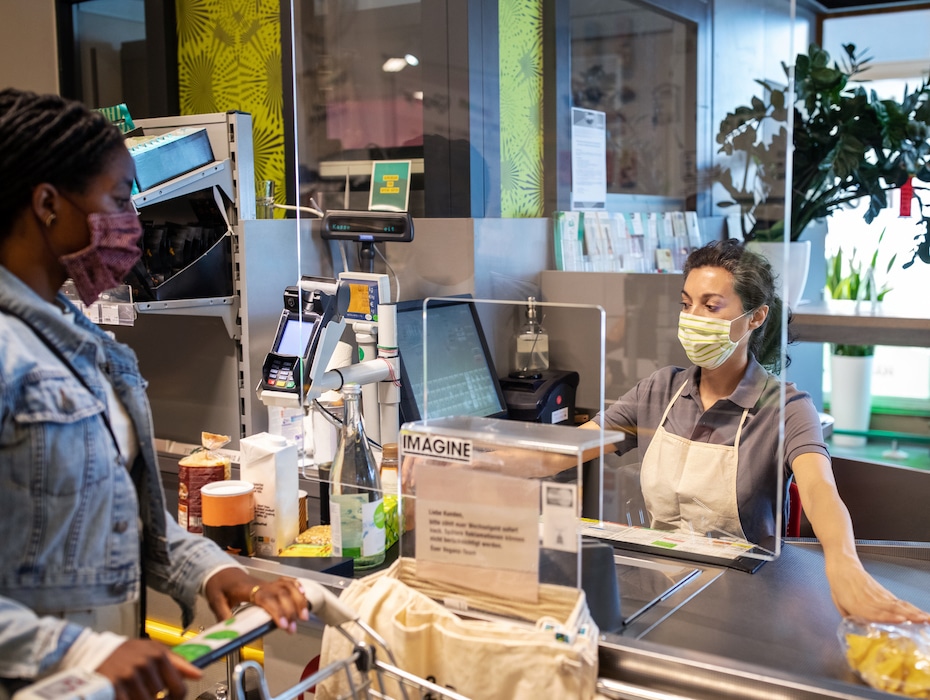In Q1 of 2020, amid the panic of COVID-19, Netflix added more new subscribers than ever before during a single three-month span. 15.8 million to be exact.1
Just a few dozen miles north, unicorn startup Airbnb was experiencing a record of their own, but it wasn’t a good one. In fact, over the course of April, May, and June 2020, Airbnb’s revenue fell 67% from what it was during the same time in 2019.2
How can two darling tech companies—each with high-performing workforces that are already familiar with remote work and collaborative tools—have such different experiences with COVID-19?
In this post, we’ll cover:
- Why some high-tech companies are doing well (and others aren’t) during COVID-19
- The move to remote work for high-tech corporate employees
- 3 day-to-day impacts of COVID-19 on the teams of high-tech companies
👀 What are the 4 key components of a successful startup?
Mind the gap: Why some high-tech companies are doing well (and others aren’t) during COVID-19
Netflix isn’t having a polar opposite experience from startup Airbnb because COVID’s impacted these companies’ workforces (and the ways they operate) any differently. If anything, in that sense, it’s probably pushed each company closer together, as they’ve likely had to become more reliant on integrated phone services, video conferencing, and messaging apps.
Instead, the differences in early COVID-19 success have to do with the services and products these companies provide people with and how COVID-19 impacts the way consumers can or cannot experience them.3
Think about it. When people can’t travel places, a company that provides global hospitality services is going to suffer no matter how technologically advanced it is. And in the same vein, it’s safe to say that a company that provides in-home streaming services has a good chance of experiencing growth during lockdowns and quarantines.
It’s all contextual: it entirely depends on the business and its offerings, which makes it impossible to draw many general conclusions about COVID-19’s impact on every high-tech company.
But there is one, and that is this: regardless of service, product, or industry, COVID-19 has rapidly accelerated high-tech companies’ and startups’ adoption of remote work. And for what it’s worth, so far they seem to be more than successful with it—and they also appear eager to make WFH (work-from-home) a permanent thing.4
The move to remote work for high-tech corporate employees
Prior to COVID-19, many high-tech startups and companies were already flirting with remote work and hybrid models. In fact, some of these companies were already completely remote—and unquestionably successful with it, too.5
Now, after having seen the early successes of their own moves to WFH, mainstay tech companies like Facebook and Twitter are reconsidering their need for huge office spaces, which tend to come with equally large leases that don’t exactly help companies’ bottom lines.
We’re sure the adoption and subsequent debate about remote work will continue for years to come. But beyond their bottom lines, it’s hard to say whether or not remote work has been good or bad for companies, their employees, and their customers. There’s no denying the fact that high-tech companies are better equipped to adapt to a WFH lifestyle, but that’s merely a short-term advantage, as other companies in other industries will gradually learn the ways of remote work and become nearly as proficient in it.
Plus, the long-term effects of this movement have yet to be seen, and the blurring of work-life lines will continue to reset the way we all operate as humans.
But let’s put the future of these companies and the long-term effects of WFH aside, and look at the impact of COVID-19 on the day-to-day functions of high-tech teams and employees.
Because if you ask us, that’s what has truly been fascinating so far.
3 day-to-day impacts of COVID-19 on the teams of high-tech companies
#1. The lack of physical proximity has eliminated quick but essential team huddles and on-the-fly meetings
High-tech startups and companies have particular ways of working: fast, chaotic—and insanely productive.
Anchored in speed and quick communication, these businesses have grown accustomed to agile ways of working inside functional, open-floor offices. The Harvard Business Review found that whether they’re actually good for productivity or not, open-floor offices invite an opportunity for unplanned chats, collaborations, and meetings, which often lead to hours of work being completed in a matter of minutes.7
And when decisions need to be made in the blink of an eye, you need to be able to huddle quickly with your team and bounce ideas off each other before moving forward.
However, COVID-19 and the move to remote work have made these team huddles and random meetings all but impossible. But does this mean it’s the end of essential, rapid-fire communication between tech teams?
Of course not.
Overcoming the elimination of in-person huddle meetings
On-the-fly huddles are great in person, but pulling off impromptu group video and phone calls remotely is another story.
For starters, successful remote work requires organization, including a detailed calendar with time blocked off for meetings and heads-down work if you want to be productive. The chances you’re going to be able to get everyone you need on a random call at any one time throughout the day are slim.
Second, it’s unfair to expect remote team members to be available at a moment’s notice, especially when you consider the number of obligations people have while working at home—you know… watching the kids, walking the dog, taking a short coffee break.
So, we’d suggest that one way to maintain similar levels of collaboration and productivity from home is to implement daily stand-up meetings.
Inspired by the need for fast meetings that update everyone on project progress and completion, stand-up meetings are an integral piece to the agile way of working.8 They’re typically held on a weekly or daily basis, and the goal of them is to give everyone in a team a shared understanding of who’s doing what, how far along they are, and when it’s due.
So far, what we’ve found during the move to remote work is that the sooner high-tech companies can set a regular cadence for remote stand-up meetings, the sooner work begins to feel more normal and immense progress starts to be made. And your standups can be asynchronous too! Instead of doing a video call with everyone, you could try having a team chat where the group updates each other through messages in a certain time frame:
Plus, these meetings have become increasingly easier—and more personal—with integrated video conferencing. And with the best audiovisual solutions, it legitimately feels like you’re in the same room with your team members. (Just remember: always keep your camera on to maximize the effectiveness of your stand-up meetings!)
#2. Sales teams can no longer develop business at trade shows, industry events, or in face-to-face meetings
This one is more specific to the startups in the high-tech space, as they tend to rely on conferences, events, and in-person meetings as a way to drum up business more often than major tech companies.
Regardless, with the crushing effects of COVID-19 on the event industry, the sales teams of high-tech startups have been left without a major vehicle for relationship-building, lead generation, and, as the name of their job indicates, sales.9
Without trade shows, meet and greets, or educational seminars, sales teams can’t meet potential customers, start relationships, or close deals. Heck, they can’t even slip their business cards into a basket and hope for a call.
Instead, sales reps have had to reinvent a lot of the ways they go about putting themselves out there to stay on the radar of their customers and prospects—all from their own homes, too.
Developing business during COVID-19—even without trade shows or in-person events
With the disappearance of trade shows and industry events, it’s become imperative for high-tech sales teams to find an alternative approach to get the good word out there.
One of the best ways to do that is also uncomfortable and challenging for most: putting the spotlight on yourself on social media platforms, particularly LinkedIn.
Over the course of the past few years, membership, engagement, and sales opportunities on LinkedIn have consistently been rising.10 Some savvy sales reps and marketing leaders were ahead of the curve and built impressive followings early on by posting anecdotal tips, best practices, and thought-starters, and now it seems like every sales leader is trying to become a LinkedIn celebrity.
But that shouldn’t stop a sales leader in high-tech from diving in head first. By nature of LinkedIn’s algorithm—and considering who a high-tech sales executive would be connected with—it becomes rather easy to garner a following within your industry on the social media platform.
Our best advice for high-tech sales leaders is to begin investing a portion of each day to learning about LinkedIn, posting on the platform, and engaging with others via their posts or direct messages. There will be no overnight success—there never is in sales—but with consistency and fine-tuning, sales reps can begin growing an audience that likely contains a few prospects, leads, and customers.
And the more your sales team can convince prospects and leads of their industry-leading expertise, the more they’ll trust your company and commit to a partnership.
#3. Remote work is leading to burnout in customer service teams
Naturally always on and ready to help, customer service reps typically overburden themselves regardless of the industry they work in. Yet at high-tech companies, it seems like customer service teams are putting out all different kinds of fires. And now with life and work blending together, they’re doing it at all hours of the morning, day, and night.
The result of putting out fire after fire after fire?
Burnout.
Okay, okay. Bad puns aside, COVID-19 and WFH have made it far easier for high-tech customer service professionals to stay online and on task for hours and hours throughout the week. Not only are they dealing with customers, but they’re also expected to participate in team and company meetings, too.
All of these obligations, on top of balancing whatever they have going on at home, has led to rising burnout numbers in customer service representatives.11
But the thing is, it doesn’t have to be this way—even with remote work.
Set your customer service teams up for consistent success with rigid working hours and pre-defined meeting times
The best way to reduce burnout and ensure long-term success for customer service teams is to equip them with the right tools and set a consistent, inflexible working schedule.
In fact, it may even be worth disabling access to their work computers and phones during certain hours. This way, customer service teams at high-tech startups and companies would have a set schedule for work and wouldn’t be able to fall into the burnout trap—even if they tried.
Then, to further increase productivity within customer service teams, a specific pocket of time could be dedicated as their “open window,” which would indicate the reps’ availability for meetings and check-ins.
It’s ironic, but the best way to eliminate burnout in customer service teams at high-tech companies during COVID-19 and WFH might just be to limit their time on—and access to—technology.
Turning COVID-19’s negative impacts into positives is all about attention and effort
Naturally, some high-tech startups and companies have thrived during the COVID-19 pandemic due to an increase in demand for their products and services.
Others, however, have maintained their level of growth and success without experiencing a rise in demand for their products. They’ve been able to do this not only because they were well-prepared from a tech standpoint, but also because they paid attention early on and made proactive efforts to optimize their teams’ remote work setups, schedules, and strategies.
They realized a need for daily stand-up meetings between teams to ensure project efficiency and profitability. They figured out how to unlock sales even without trade shows and in-person industry events. They imposed boundaries for their customer service reps to prevent burnout, and ultimately prove that better, healthier productivity is possible without it.
By taking a human and empathetic approach to everyone’s working situation, many high-tech startups and companies have overcome the challenges of COVID-19 and used collaborative technology in a truly productive and powerful way.
Now isn’t that innovative?
Learn more about how tech startups are using RingCentral to collaborate more effectively with distributed teams and keep customers happy.
1qz.com/1881507/netflix-is-about-as-secure-as-any-company-on-the-planet-right-now
2bloomberg.com/news/articles/2020-08-12/airbnb-revenue-tanks-67-in-second-quarter-ipo-planned-for-2020
3forbes.com/sites/asheemchandna/2020/07/22/greylock-covid-19-impact-on-start-ups-assessing-the-first-few-months/#2e33128e1c8f
4cnbc.com/2020/07/18/gitlab-worked-remotely-with-over-1000-employees-before-coronavirus.html
5usatoday.com/story/tech/2020/05/22/coronavirus-remote-work-post-pandemic/5242420002
6businessinsider.com/silicon-valley-future-of-work-port-coronavirus-apple-amazon-facebook-2020-10#twitter-was-already-preparing-for-a-decentralized-workforce-even-before-the-pandemic-1
7hbr.org/2019/11/the-truth-about-open-offices
8kanbanize.com/blog/running-a-better-stand-up-meeting
9wp-eventmanager.com/covid-19-and-its-impact-on-event-industry
10socialmediatoday.com/news/linkedin-engagement-continues-to-rise-as-per-microsofts-latest-performanc/565802
11bloomfire.com/blog/cs-prevent-remote-customer-service-burnout
Originally published Nov 03, 2020, updated Dec 30, 2022






